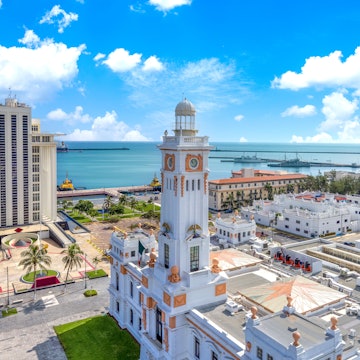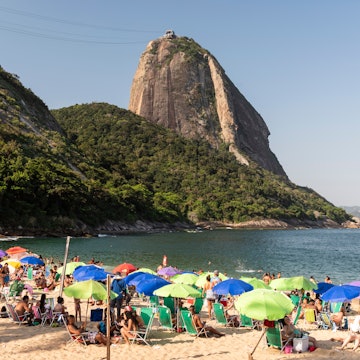

Tributaries of the Amazon flow through Guyana. SL_Photography/Getty Images
Extending from the Amazon Rainforest up to the northeastern coast of South America, Guyana is home to vast expanses of untouched rainforest and savanna, as well as some of the best wildlife-spotting opportunities on the continent. It’s also South America’s only English-speaking country, and in many ways has more cultural commonality with the Caribbean than it does with neighboring Venezuela and Brazil.
While Guyana is an easy destination for English speakers worried about language barriers, much of its tourism infrastructure is still under development, especially once you get beyond the coastal regions, where roughly 90% of the Guyanese population resides. This means that you’ll need an adventurous spirit – and a bit of gumption – to make the most of your journey. Still, if you’re willing to put in the effort, you’ll be rewarded with ample opportunities to see magnificent wildlife and immerse yourself in the history and culture of Guyana. Here are the best ways to experience this very special and (for now) off-the-beaten-path destination.
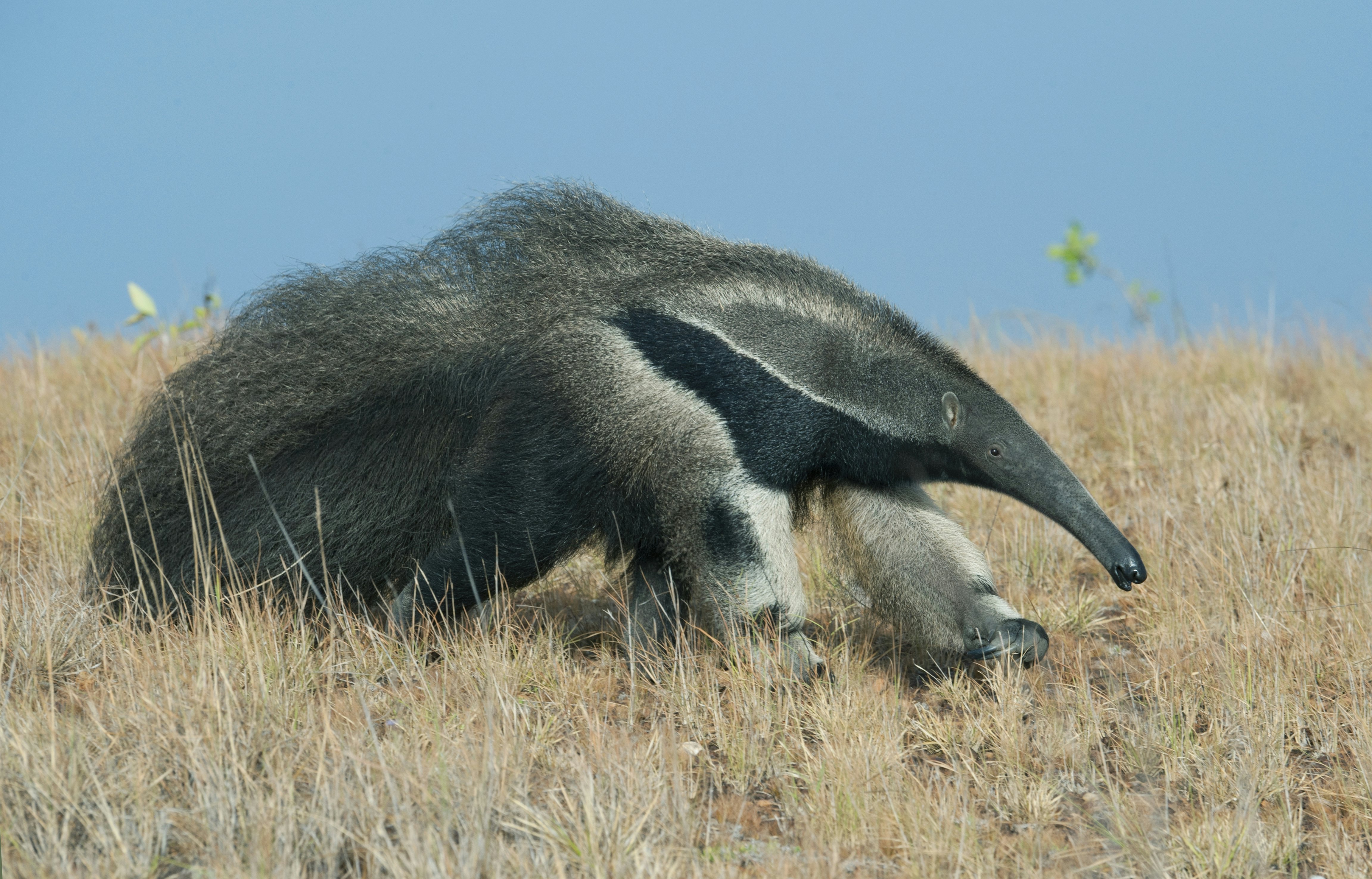
1. Track giants in the wilderness
Guyana is known as the “land of giants,” with supersized versions of all sorts of creatures, from otters to armadillos. One of the biggest draws (literally and figuratively) is the giant anteater, which measures upwards of 1.5m (5ft) from the tip of its snout to the ends of its adorably fluffy tail. These gargantuan creatures are best spotted in the grasslands of the Rupununi savannas, especially at dawn, when they’re on the hunt for tasty ants. The same region is also home to giant armadillos, some of which weigh over 45kg (100lbs), and giant river otters, which can reach lengths of up to 1.8m (6ft).
Planning tip: Many homestays and lodges in the Rupununi, including Saddle Mountain Ranch and Wichabai Ranch offer anteater-tracking programs. Karanambu Lodge is the place to go for giant river otter-spotting.
2. See some of the world’s largest water lilies
It’s not just the animals that are giant in Guyana. The country is also one of only a few places on earth where you can see Victoria amazonica, Guyana’s national flower. The disk-like leaves of this massive water lily can grow to up to 1.8m (6ft) in diameter and support a load of over 45kg (100lbs), and it’s not unusual to see herons and other waterfowl using the plants as perches. Giant water lilies are endemic to the Amazon River Basin, and are found primarily in backwaters and freshwater lakes.
Planning tip: Giant water lily flowers close during the day and open at night, when they emit a sweet fragrance that entices pollinating beetles. If you visit around sunset, you can watch (and smell) the flowers unfold before your eyes.
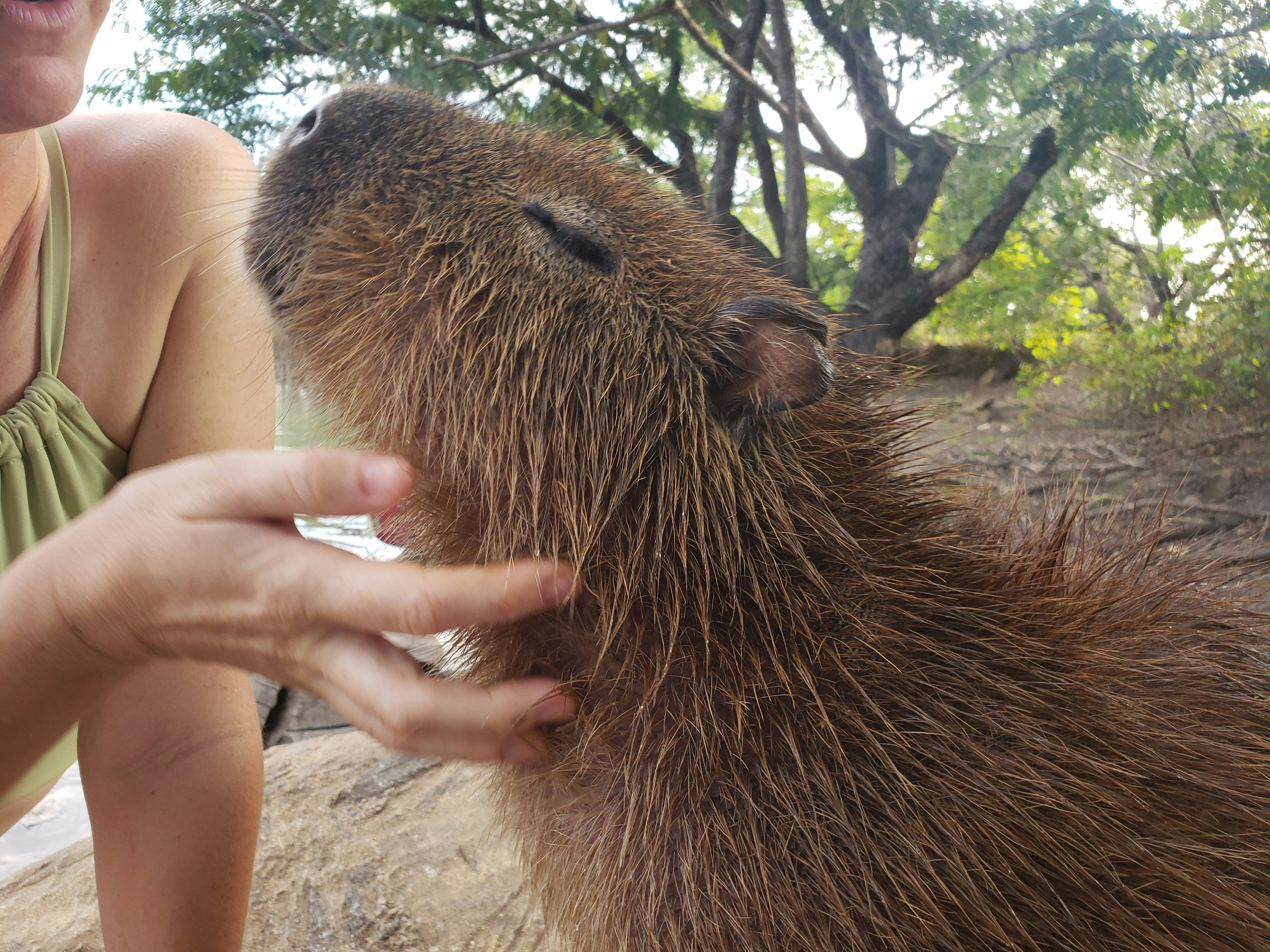
3. See capybaras at Wichabai Ranch
If you spend much time scrolling, you may be familiar with capybaras, a beloved rodent who’ve inspired everything from viral songs to memes. These adorable creatures are found throughout much of South America, including Guyana, and although capybaras are famously chill, you should still keep your distance to avoid frightening them.
There’s one place in Guyana, however, where the capybaras welcome human company: Wichabai Ranch. This remote lodge in the Guyanese grasslands doubles as the headquarters of the South Rupununi Conservation Society (SRCS) and is home to a trio of orphaned capybaras who were bottle-raised at the ranch and are therefore comfortable with humans. Go for a swim at the ranch’s pond and a purring capybara may just approach you for a chin scratch.
4. Break (and make) bread with Indigenous community members
Community-based tourism is slowly starting to take off in Guyana, and members of some of the country’s Amerindian communities offer culturally immersive programs where visitors can get first-hand experience with traditional skills. You can visit the home of a Wapishana family in the village of Katoonarib to learn how to make cassava (yuca) bread from scratch.
Just don’t expect a regular cooking class; instead, you’ll head to the family’s compact farm to harvest cassava and then take it back to their family kitchen where you’ll process it into flour by peeling, grating and then straining the root through a weighted basket system to ensure that its free of naturally occurring cyanide (seriously). Once your flour is ready, you’ll add a bit of water to turn it into a powdery dough and bake it on a massive griddle. The result? Tasty, golden flatbread that you’ll get to eat with a lunch of veggies and fish. Wash it down with homemade juice or a cup of kaasiri, fermented cassava juice with a boozy kick.
Planning tip: Getting to the village takes a bit of planning. Your best start is by contacting the local tourism organization, Visit Rupununi, for details on how to sign up.

5. Spot colorful birds and massive eagles from a rainforest perch
Guyana has long been a hot spot for bird-watching, with over 820 species found throughout the country. Along with Guianan cock-of-the-rocks, birders may be able to spot sun parakeets – beloved for their plumage that resembles an orange sunrise – and bright-red scarlet ibises. Guyana is also one of the few places on Earth with red siskins, vermilion birds that were commonly poached in the mid-20th century and bred with domestic canaries to create so-called “red canaries.” Because of this practice, red siskins are now endangered, but lucky birders can still spot them in Guyana’s wilds.
Many birders visit Guyana with hopes of seeing harpy eagles, one of the world’s largest types of eagle, with wingspans that can exceed 1.8m (6ft). A great place to try your luck is at the Iwokrama Canopy Walkway, a network of rainforest walkways some 30m (100ft) from the ground.
6. Fill up on tasty Guyanese cuisine
Guyana has a huge culinary repertoire that draws from various influences, including Indigenous, African, Indian, Chinese and European traditions, a reflection of the country’s multicultural history. Don’t miss bakes, starchy breakfast rolls commonly served with saltfish, and pholourie, fried lentil balls served with chutney. Special-occasion dishes include pepperpot, a meat stew prepared with cassareep (a savory byproduct of cassava root processing), and Seven Curry, an Indian-style thali of curried pulses and vegetables, many of which combine Indian flavor profiles with South American ingredients. If you like spicy food, ask for pepper sauce, a Guyanese hot sauce that’s typically made with native wiri-wiri peppers. Those with a sweet tooth should try pine tarts, shortcrust pastries filled with pineapple jam.
Planning tip: Pick up all sorts of local ingredients, from tropical fruits to homemade pepper sauce, at Stabroek Market in Georgetown.
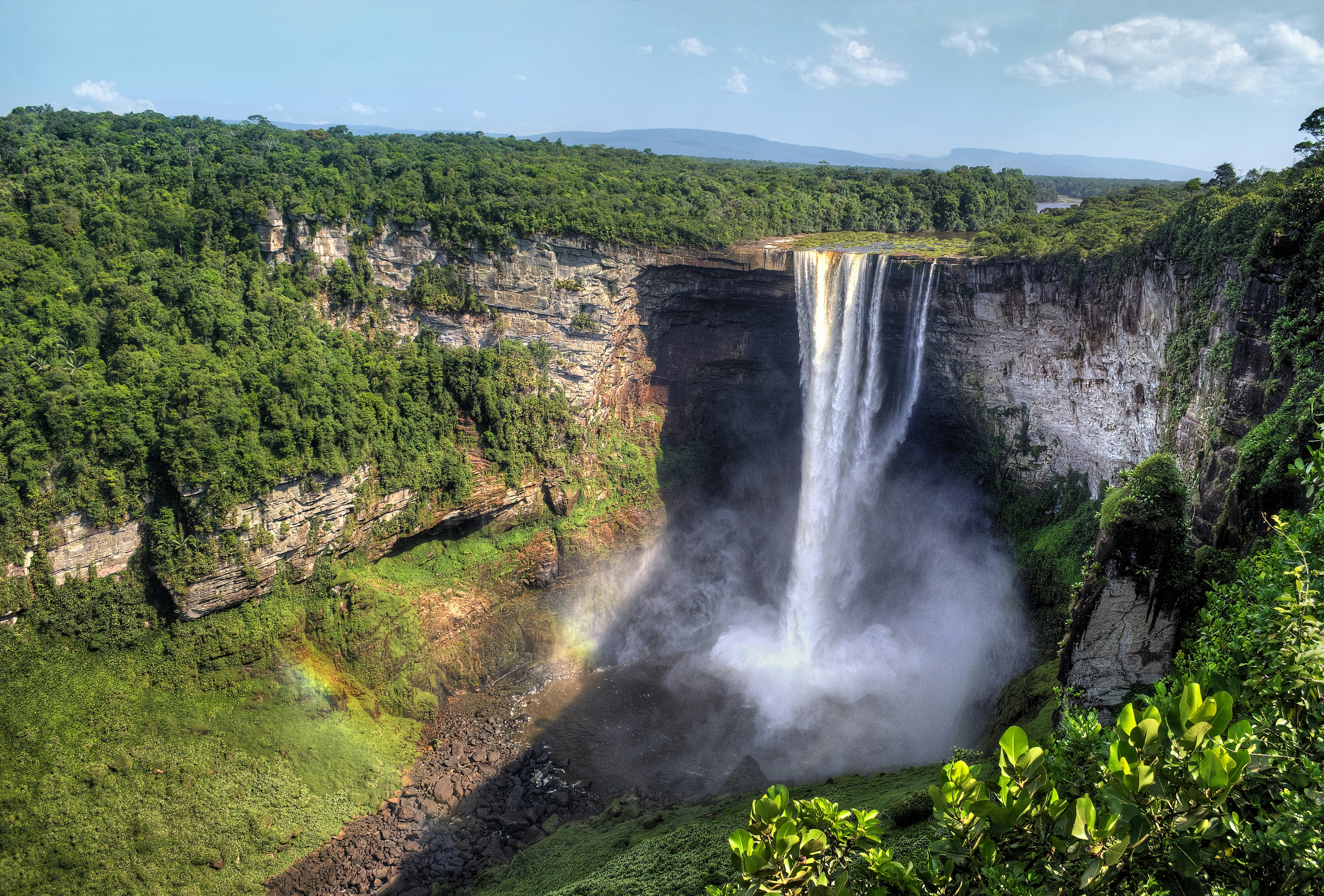
7. Feel the mist on your face at Kaieteur Falls
Even if you aren’t a major waterfall chaser, Kaieteur Falls is well worth a visit. At over 245m tall (800ft), it’s the world's largest single-drop waterfall, as well as one of the most powerful, gushing tens of thousands of gallons every second. The area around the falls is also home to loads of different avian species, including the bizarre-looking Guianan cock-of-the-rock, a blood-orange passerine with pompadour-like plumage.
Planning tip: Most visitors to Kaieteur Falls join tours that include round-trip flights from Georgetown. You can also get there overland, but it involves multiple days of bus rides, boat journeys and hiking.
8. Visit the site of the Jonestown Tragedy
Guyana made headlines in 1978, when members of the Peoples Temple, a cult headed by American preacher Jim Jones, gunned down US Congressman Leo Joseph Ryan Jr and four journalists on a remote airstrip in Port Kaituma in northeastern Guyana. Hours later, over 900 members of the organization, including Jones himself, died by mass murder/suicide at the nearby People’s Agricultural Settlement, better known as “Jonestown.” For the decades that followed, the settlement fell into disrepair, with visitors limited to a few family members of the deceased.
As of 2025, anyone with an interest in the story of Jonestown can visit the site and learn about the tragedy. Wanderlust Adventures GY, in cooperation with the Guyanese government, runs an overnight Jonestown Memorial Tour. Travelers fly from Georgetown to the very airstrip where Ryan and his entourage were murdered before proceeding to Jonestown itself to see what remains of the compound. The tour also includes time to debrief with a person who lived in the area during the massacre to learn firsthand about Jonestown’s impact on the local community.










